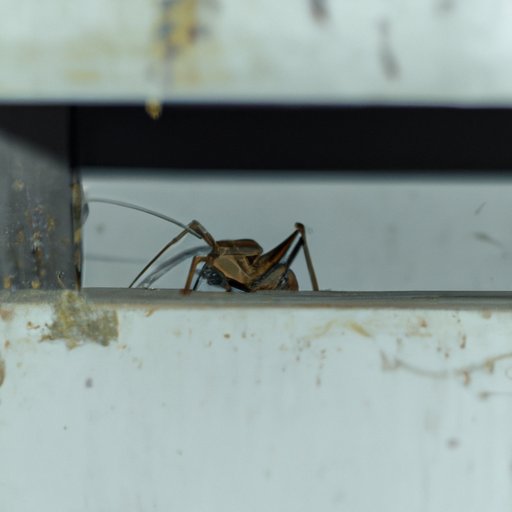
Introduction
Spider crickets, or camel crickets, are an unwelcome sight for many homeowners. These pests can quickly invade your home and damage your belongings. In this article, we will provide you with practical tips and tricks for getting rid of spider crickets. Our target audience is homeowners who are struggling with this pest problem and are looking for effective solutions.
Identify Spider Crickets
Spider crickets are known for their long legs and spiky appearance. They have a mottled brown color and can range in size from half an inch to two inches. Spider crickets are attracted to damp environments, and they primarily feed on organic debris like leaves and dead insects. Although they do not bite humans, they can damage fabrics, paper, and cardboard. It is crucial to correctly identify spider crickets before attempting to get rid of them.
Reduce Moisture
Spider crickets thrive in moist areas. To make your home less welcoming to spider crickets, you should reduce moisture levels wherever possible. Using dehumidifiers, fixing plumbing leaks, and ventilating bathrooms are all practical ways to reduce moisture levels in the house. You should also avoid leaving standing water in sinks or bathtubs and promptly address any water damage.
Seal Cracks and Gaps
Spider crickets can enter your home through small cracks and gaps. It is essential to identify and seal off entry points to prevent spider crickets from gaining access to your home. You can use caulk, foam, or weatherstripping to seal cracks and gaps around windows, doors, pipes, and electrical wiring. Make sure you also seal off the area around the perimeter of your home’s foundation.
Set Traps
You can use glue traps with bait to capture spider crickets. Place the traps in areas where spider crickets are likely to gather, such as basements, garages, and crawl spaces. Check the traps regularly and dispose of them as needed. You can also use a handheld vacuum cleaner to remove spider crickets from your home.
Use Insecticides
You can use chemical insecticides to control spider crickets. However, it is essential to use them safely and effectively. Always follow the manufacturer’s instructions and wear protective clothing and a mask when applying insecticides. Avoid applying insecticides to areas where children and pets play, and thoroughly ventilate the area after application.
Relocate Spider Crickets
If you do not want to kill spider crickets, you can capture and release them outside. Use a jar or another plastic container to capture the spider cricket and release it in a wooded area away from your home. Make sure to release the spider cricket far enough away from your home to prevent it from finding its way back.
Call Pest Control
If you have a severe infestation or are unable to control spider crickets on your own, it may be time to call in the professionals. Pest control specialists have the knowledge and tools to effectively eliminate spider crickets and prevent future infestations. When choosing a pest control service provider, look for one that is licensed, insured, and experienced in spider cricket control.
Conclusion
Getting rid of spider crickets can be daunting, but it is not impossible. By reducing moisture, sealing cracks and gaps, setting traps, using insecticides, relocating spider crickets, or calling pest control, you can effectively control the population of spider crickets in your home. Remember to identify spider crickets correctly and always act safely. If you need additional help, reach out to your local pest control professionals for assistance.





